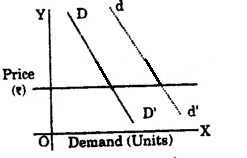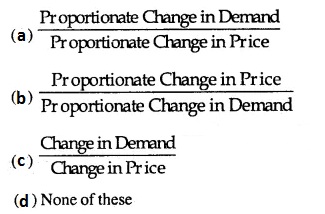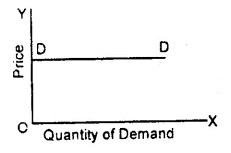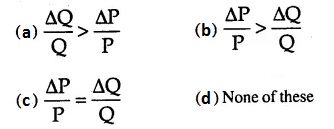Free PDF Download of CBSE Chemistry Multiple Choice Questions for Class 12 with Answers Chapter 15 Polymers. Chemistry MCQs for Class 12 Chapter Wise with Answers PDF Download was Prepared Based on Latest Exam Pattern. Students can solve NCERT Class 12 Chemistry Polymers MCQs Pdf with Answers to know their preparation level.
Polymers Class 12 Chemistry MCQs Pdf
1. The monomer of polystyrene is
(a) C2H —CH=CH2
(b) CH2=CHCl
(c) C6H5CH=CH2
(d) CH2=CH—CHO
Answer/Explanation
Answer: c
Explaination:
(c) C6H5—CH=CH2 is monomer of polystyrene.
2.

Answer/Explanation
Answer: a
Explaination:

3.
(a) addition polymer
(b) thermosetting polymer
(c) homopolymer
(d) condensation copolymer (Nylon-66)
Answer/Explanation
Answer: d
Explaination:
(d) It is condensation copolymer of Hexamethylene diamine (H2N(CH2)6NH2) and adipic acid,

4. Which of the following statements is not true?
(a) Natural rubber is frans-polyisoprene
(b) Buna-S is addition copolymer of butadiene and styrene
(c) Natural rubber is cis 1, 4-polymer of isoprene
(d) Vulcanisation makes rubber hard due to cross linkages with sulphur.
Answer/Explanation
Answer: a
Explaination:
(a) Natural rubber is cis- polyisoprene
5. Which of the following is not correct?

Answer/Explanation
Answer: a
Explaination:

is polymer of 2-chloro-1,3-butadiene (Chloroprene)
6. Which of the following has ester linkages?
(a) Nylon
(b) Bakelite
(c) Terylene
(d) PVC
Answer/Explanation
Answer: c
Explaination:
(c) Terylene is polyester, it has many ester linkages.
7. Which of the following is thermosetting polymer
(a) Neoprene
(b) PVC
(c) Nylon-6,6
(d) Bakelite
Answer/Explanation
Answer: d
Explaination:
(d) Bakelite is cross linked thermosetting polymer of phenol and formaldehyde.
8. Caprolactum is used for preparation of
(a) Nylon-6
(b) Nylon-6,6
(c) Nylon 6, 10
(d) Nylon-2 – Nylon-6
Answer/Explanation
Answer: a
Explaination:
(a) Nylon-6 is polymer of caprolactum.
9. The polymer used in orthopaedic devices and in controlled drug release is
(a) Orion
(b) PTFE
(c) SBR
(d) PHBV
Answer/Explanation
Answer: a
Explaination:
(a) PHBV is biocompatible, used in orthopaedic devices and controlled drug release. Orion is

SBR is styrene butadiene rubber.
10. Which of the following is not correct regarding terylene?
(a) Step growth polymer
(b) Synthetic fibre
(c) also called dacron
(d) Thermosetting plastic
Answer/Explanation
Answer: d
Explaination:
(d) It is synthetic fibre condensation, step growth polymer also called dacron.
11. The polymer which is used in manufacture of squeeze bottles is
(a) Polystyrene
(b) Teflon
(c) Polypropene
(d) Low density polythene
Answer/Explanation
Answer: d
Explaination:
(d) LDP is used for making squeeze bottles, flexible hose pipe.
12. The polymer containing strong intermolecular H-bonding and crystalline nature is
(a) Polystyrene
(b) Natural rubber
(c) Teflon
(d) Nylon 6, 6
Answer/Explanation
Answer: d
Explaination:
(d) Nylon 6, 6 is fibre with strong intermolecular H-bonding and is crystalline in nature.
13. Which of the following is initiator in free radical polymerisation?
(a) Benzoyl peroxide
(b) AlCl3
(c) HNO3
(d) Bu-Li
Answer/Explanation
Answer: a
Explaination:
(a) Benzoyl peroxide undergoes homolytic fission to form free radicals and acts as initiator.
14. Novolac, the linear polymer used in paints is
(a) copolymer of buta 1, 3-diene and styrene
(b) polymer of methyl methacrylate
(c) condensation polymer of phenol and HCHO
(d) copolymer of melamine and HCHO
Answer/Explanation
Answer: c
Explaination:
(c) It is copolymer of phenol and HCHO, linear.
15. Which of the following is not a semisynthetic polymer? [NCERT Exemplar]
(a) cw-polyisoprene .
(b) Cellulose nitrate
(c) Cellulose acetate
(d) Vulcanised rubber
Answer/Explanation
Answer: a
Explaination:
(a) cis-polyisoprene is natural rubber, others are semisynthetic because these are obtained from natural polymers by suitable process.
16. The commercial name of polyacrylonitrile is __________ . [NCERT Exemplar]
(a) Dacron
(b) Orion (acrilan)
(c) PVC
(d) Bakelite
Answer/Explanation
Answer: b
Explaination:

artificial wool, used for making carpets etc.
17. Zeigler – Natta catalyst is used in making
(a) LDPE
(b) HDPE
(c) Polystyrene
(d) PMMA
Answer
Answer: b
18. Natural rubber in a polymer of
(a) Butadiene
(b) Ethyne
(c) Styrene
(d) Isoprene
Answer
Answer: d
19. Which of the following is a biodegrable polymer?
(a) Cellulose
(b) Polyethene
(c) PVC
(d) Nylon-6
Answer
Answer: a
20. A polymer of butadiene and acrylonitrile is called
(a) Buna-2
(b) Buna-N
(c) Buna-S
(d) Buna-A
Answer
Answer: b
21. The manufacture of nylon-6 involves condensation of
(a) Phenol and formaldehyde
(b) Urea and formaldehyde
(c) Adipic acid and hexamethylene diamine
(d) Ethylene glycol and pthalic acid
Answer
Answer: c
22. Match List-I and List-II and select the correct answer using the codes below the lists:

Answer
Answer: d
23. F2C = CF2 is a monomer of
(a) Teflon
(b) Glyptal
(c) Nylon-6
(d) Buna-S
Answer
Answer: a
24. Which of the following is used in tyre cords?
(a) Terylene
(b) Polyethylene
(c) Polypropylene
(d) Nylon-6
Answer
Answer: d
25. PHBV has _______ type of linkages
(a) Amide
(b) Ester
(c) Diene
(d) Nitrile
Answer
Answer: b
26. The vulcanised rubber has
(a) High water absorption, resistant to oxidation and good elasticity
(b) High water absorption, susceptible to oxidation and no elasticity
(c) High water absorption, susceptible to oxidation and good elasticity
(d) Low water absorption, resistance to oxidation and good elasticity.
Answer
Answer: d
27. Which of the following polymer is biodegradable? [NCERT Exemplar]

Answer/Explanation
Answer:
Explaination:
(c) is PHBV, biodegradable,
(a) is Neoprene
(b) Buna-N
(d) Nylon-6, 6.
28. In which of the following polymers ethylene glycol is one of the monomer units? [NCERT Exemplar]

Answer/Explanation
Answer:
Explaination:
(a) has HOCH2—CH2—OH as one of the monomers of terylene
(b) Polythene
(c) Buna-S
(d) PHBV
29. Which of the following statements is not true about low density polythene? [NCERT Exemplar]
(a) Tough
(b) Hard
(c) Poor conductor of electricity
(d) Highly branched structure
Answer/Explanation
Answer: b
Explaination:
(b) It is not hard but flexible, branched, tough, poor conductor of electricity.
Note: In the following questions two or more options may be correct. (Q.20 to Q.22)
30. Which of the following polymers, need atleast one diene monomer for their preparation? [NCERT Exemplar]
(a) Dacron
(b) Buna-S
(c) Neoprene
(d) Novolac
Answer/Explanation
Answer:
Explaination:
(b) and (c). Buna-S needs buta 1, 3-diene and Neoprene needs 2-chloro 1,3-butadiene. Dacron and Novolac are condensation polymers.
31. Which of the folloiwng are characteristics of thermosetting polymers? [NCERT Exemplar]
(a) Heavily branched cross linked polymers,
(b) Linear slightly branched long chain molecules.
(c) Become infusible on moulding so cannot be reused.
(d) Soften on heating and harden on cooling, can be reused.
Answer/Explanation
Answer:
Explaination:
(a) and (c) e.g. Bakelite is used for making electrical switches and switch boards.
32. Which of the following polymers are thermoplastic? [NCERT Exemplar]
(a) Teflon
(b) Natural rubber
(c) Neoprene
(d) Polystyrene
Answer/Explanation
Answer:
Explaination:
(a) and (d), Teflon is used in non-stick kichen ware, polystyrene is used to make toys and radio and T.V. cabinets.
33. Match the polymer of column I with correct monomer of column II. [NCERT Exemplar]
| Column I | Column II |
| (a) High density polythene | (i) Isoprene |
| (b) Neoprene | (ii) Tetrafluoro- ethene |
| (c) Natural rubber | (iii) Chloroprene |
| (d) Teflon | (iv) Acrylonitrile |
| (e) Acrilan | (v) Ethene |
Answer/Explanation
Answer:
Explaination:
(a) (v)
(b) (in)
(c) (i)
(d) (ii)
(e) (iv)
34. Match the polymers given in Column I with their chemical names given in Column II. [NCERT Exemplar]
| Column I | Column II |
| (a) Nylon 6 | (i) Polyvinyl chloride |
| (b) PVC | (ii) Polyacrylonitrile |
| (c) Acrilan | (iii) Polycaprolactum |
| (d) Natural rubber | (iv) Low density polythene |
| (e) LDP | (v) cis-polyisoprene |
Answer/Explanation
Answer:
Explaination:
(a) (iii)
(b) (i)
(c) (ii)
(d) (v)
(e) (iv)
35. Match the polymers given in Column I with their commercial names given in Column II. [NCERT Exemplar]
| Column I | Column II |
| (a) Polyester of glycol and phthalic acid | (i) Novolac |
| (b) Copolymer of 1, 3-butadiene and styrene | (ii) Glyptal |
| (c) Phenol and formaldehyde resin | (iii) Buna-S |
| (d) Polyester of glycol and terephthalic acid | (iv) Buna-N |
| (e) Copolymer of 1, 3-butadiene and acrylonitrile | (v) Dacron |
Answer/Explanation
Answer:
Explaination:
(a) (ii)
(b) (iii)
(c) (i)
(d) (v)
(e) (iv)
36. Match the polymers given in Column I with their main applications given in Column II. [NCERT Exemplar]
| Column I | Column II |
| (a) Bakelite | (i) Unbreakable crockery |
| (b) Low density polythene | (ii) Non-stick cook-wares |
| (c) Melamine- formaldehyde resin | (iii) Packaging material for shock absorbance |
| (d) Nylon 6 | (iv) Electrical switches |
| (e) Polytetrafluo- roethane | (v) Squeeze bottles |
| (f) Polystyrene | (v) Tyre, cords |
Answer/Explanation
Answer:
Explaination:
(a) (iv)
(b) (v)
(c) (i)
(d)(vi)
(e) (ii)
(f) (iii)
37. Match the polymers given in Column I with the preferred mode of polymerisation followed by their monomers. [NCERT Exemplar]
| Column I | Column II |
| (a) Nylon-6,6 | (i) Free radical Polymeriaation |
| (b) PVC | (ii) Ziegler-Natta polymerisation or coordination polymerisation |
| (c) HDP | (iii) Anionic polymerisation |
| (iv) Condensation polymerisation |
Answer/Explanation
Answer:
Explaination:
(a) (iv)
(b) (i)
(c) (ii)
Note: In the following questions a statement of assertion followed by a statement of reason is given. Choose the correct answer out of the following choices. (Q.28 to Q.30)
(a) Assertion and reason both are correct and reason is correct explanation of assertion.
(b) Assertion and reason both are wrong statements.
(c) Assertion is correct but reason is wrong statement.
(d) Assertion is wrong but reason is correct statement.
(e) Assertion and reason both are correct statements but reason is not correct explanation of assertion.
38. Assertion: Rayon is a semi synthetic polymer and is taken as a better choice than cotton fabric. [NCERT Exemplar]
Reason: Mechanical and aesthetic properties of cellulose can be improved by acetylation.
Answer/Explanation
Answer: a
Explaination:
(a) Assertion and reason both are correct and reason is correct explanation of assertion.
39. Assertion: Most of the Synthetic polymers are not biodegradable. [NCERT Exemplar]
Reason: Polymerisation process induces toxic character in organic molecules.
Answer/Explanation
Answer: c
Explaination:
(c) Assertion is correct but reason is wrong statement.
40. Assertion: Olefinic monomers undergo addition polymerisation. [NCERT Exemplar]
Reason: Polymerisation of vinyl chloride is initiated by peroxides/ persulphates.
Answer/Explanation
Answer: e
Explaination:
(e) Assertion and reason both are correct statements but reason is not correct explanation of assertion.
41. Trans-polyisoprene, a rubber like material is called __________ .
Answer/Explanation
Answer:
Explaination: Gutta percha
42. High density polythene __________ polymer of ethene.
Answer/Explanation
Answer:
Explaination: linear
43. A copolymer can be addition or condensation. [True/False]
Answer/Explanation
Answer:
Explaination:
True, e.g. Nylon-66 (condensation copolymer), Buna-S (addition copolymer).
44.

is Nylon 6, 10, synthetic fibre. [True/False]
Answer/Explanation
Answer:
Explaination: True
45.

is Melamine-formaldehyde resin, a thermosetting polymer. [True/False]
Answer/Explanation
Answer:
Explaination: True
46. Which of the following is natural polymer? Buna-S, Protein, PVC [Chennai 2019; AI2014]
Answer/Explanation
Answer:
Explaination:
Protein is a natural polymer.
47. Give an example of semi-synthetic polymer.
Answer/Explanation
Answer:
Explaination:
Cellulose nitrate.
48. What are synthetic polymers?
Answer/Explanation
Answer:
Explaination:
These are man-made polymers extensively used in daily life as well as in industry, e.g. plastic (polythene)
49. Give an example of linear and branched chain polymer each.
Answer/Explanation
Answer:
Explaination:
Linear polymer – Polyvinyl chloride
Branched chain polymer – Low density polythene.
50. Identify the type of polymer given in the following figure. [HOTS]

Answer/Explanation
Answer:
Explaination: Cross-linked polymer
51. Identify the type of polymer:
—A—A—A—A—A—A—
Answer/Explanation
Answer:
Explaination: Homopolymer
52.

a homopolymer or a copolymer? [AI 2013]
Answer/Explanation
Answer:
Explaination: It is homopolymer.
53.

a homopolymer or a copolymer? [AI 2013; NCERT]
Answer/Explanation
Answer:
Explaination: It is homopolymer.
54. Define the term, ‘homopolymerisation’ giving an example. [Delhi 2013(C); 2012]
Answer/Explanation
Answer:
Explaination:
The process in which only one type of monomer undergoes polymerisation is called homopolymerisation, e.g. formation of polythene from ethene is homopolymerisation.
55. How does a homopolymer differ from a copolymer? [AI 2014(C)]
Answer/Explanation
Answer:
Explaination:
Homopolymer is formed by the same monomer unit, whereas copolymer is formed by repeating two different monomers.
56. Identify the type of polymer:
—A—B—B—A—A—A—B—A—
Answer/Explanation
Answer:
Explaination: Copolymer
57. What is the repeating structural unit in polythene polymer? [AI 2011]
Answer/Explanation
Answer:
Explaination: (— CH2—CH2—)n
58. Draw the structure of the monomer for the following polymer: Polypropene [Delhi 2012]
Answer/Explanation
Answer:
Explaination:

59. What is the primary structure feature necessary for a molecule to make it useful in a condensation polymerisation reactioris?
Answer/Explanation
Answer:
Explaination:
Monomers should have more than one functional group (bifunctional).
60. Give one example of a condensation polymer? [AI 2013]
Answer/Explanation
Answer:
Explaination: Nylon 6, 6.
61. Give an example of elastomers.
Answer/Explanation
Answer:
Explaination:
Natural rubber, Buna-S, Buna-N, Neoprene is an elastomer.
62. Based on molecular forces, what type of polymer is neoprene? [AI 2014]
Answer/Explanation
Answer:
Explaination: Elastomer.
63. Which of the following is a fibre?
Nylon, Neoprene, PVC [AI 2014]
Answer/Explanation
Answer:
Explaination: Nylon is fibre.
64. Which factor imparts crystalline nature to a polymer like nylon?
Answer/Explanation
Answer:
Explaination:
It is strong intermolecular forces of attraction like hydrogen bonding which leads to close packing of chains that impart crystalline nature.
65. Which of the following is a thermoplastic polymer?
Bakelite, Polystyrene, Urea-formaldehyde resin.
Answer/Explanation
Answer:
Explaination: Polystyrene.
66. Give an example of thermosetting polymer.
Answer/Explanation
Answer:
Explaination: Bakelite.
67. Out of chain growth polymerisation and step growth polymerisation, in which type will you place the following.
(—A—)m + (—A—)n → (A—)m (—A—)n or —(A—A—)m+n
Answer/Explanation
Answer:
Explaination: Chain growth polymer
68. Write the names of monomers of the following polymer: [AI 2016]

Answer/Explanation
Answer:
Explaination:

69. What does the part ‘6, 6’ mean in the name nylon-6, 6? [Chennai 2019]
Answer/Explanation
Answer:
Explaination:
It means each monomer of nylon has six carbon atoms. Adipic acid (HOOC—(CH2)4—COOH) and hexamethylenediamine (H2N—(CH2)6—NH2).
70. What is natural rubber?
Answer/Explanation
Answer:
Explaination:
It may be considered as a linear polymer of cis-isoprene (2-methyl-1,3-butadiene) and is also known as cis-1,4-polyisoprene.
71. Give the chemical reaction involved in the formation of Neoprene from chloroprene.
Answer/Explanation
Answer:
Explaination:

72. Why is the molecular mass of polymer is always expressed as an average?
Answer/Explanation
Answer:
Explaination:
The polymer sample contains chains of varying lengths, therefore, its molecular mass is always expressed as an average.
73. Give an example of biodegradable polymer.
Answer/Explanation
Answer:
Explaination:
Poly P-hydroxybutyrate-co-P-hydroxy valerate (PHBV)
74. Give two uses of polystyrene.
Answer/Explanation
Answer:
Explaination:
It is used as insulator and in manufacture of toys and television cabinets.
75. Can enzyme be called a polymer?
Answer/Explanation
Answer:
Explaination:
Yes. Enzymes are biocatalysts which are proteins, the polymers of amino acids.
We hope the given Chemistry MCQs for Class 12 with Answers Chapter 15 Polymers will help you. If you have any query regarding CBSE Class 12 Chemistry Polymers MCQs Pdf, drop a comment below and we will get back to you at the earliest.





















